2014-12-14 By Robbin Laird
The F-35 is entering service at a critical juncture when air and ground dynamics are being linked in new ways.
A 360 degree sensing aircraft which can do close air support and other air superiority missions in new ways, the F-35 will become a staple of the next round of ground-to-air and air-to-ground revolution which is ongoing.
The F-35 is entering service at an interesting time—a time when digital warfare is simultaneously seeing significant evolution.
The US and Allied fleet of F-35s will also add an “electronic warfare” component to the fight, an “E” for electronic.
It is not necessary to designate the F-35 as the F/A/E-35—although that might be more accurate.
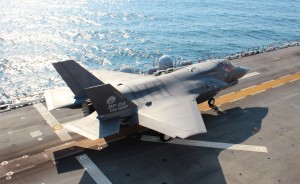
In other words, the IOC of the F-35 is not simply about the introduction of a replacement aircraft but the next phase in the revolution of airpower as inextricably intertwined with doing air combat differently.
In wide ranging discussions with the pilots, maintainers and industrialists in the US, Asia and Europe involved in the launch of the F-35, there is clear awareness that the F-35 is not simply about business as usual.
And there is a clear sense of excitement seen by the F-35 launch cadre, which is missed by those not part of the process.
The USMC is the lead service launching the F-35 global fleet and as such has become a key global player as the partners and other services watch the USMC roll out the F-35B.
In this interview, Lieutenant General Davis, the Deputy Commandant for Aviation, discusses the approach the Marine Corps is taking to fielding the aircraft.
Question: As we come to the end of 2014, the USMC is anticipating the Initial Operational Capability by mid-2015.
How is that process progressing?
Lieutenant General Davis: Marine Aviation is progressing very well towards the initial operational capability (IOC) for the F-35B by summer of 2015.
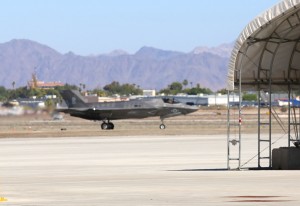
The Joint Program Office, Lockheed Martin and Pratt and Whitney and Rolls Royce are diligently working with us to achieve this significant milestone.
The Green Knights of VMFA-121 at MCAS Yuma, Arizona are flying an advanced version of aircraft software that very closely mirrors 2B IOC software.
The major challenge is to simultaneously train our aircrew and maintainers to achieve the IOC standard while also meeting key Operational Test (OT) milestones.
As a part of getting ready to declare IOC, we will conduct operational test with fleet aircraft aboard our amphibious carriers this spring.
The event will be a joint effort between VMFA-121 and VMX-22 to do the testing aboard USS Wasp.
Bottom line: it has been a multifaceted and integrated team effort to get our machines, crews and maintainers ready for IOC declaration.
I’m getting more and more confident we will make it as I look at 121’s readiness and sortie generation rate. It’s getting better all the time. t.
Our F-35B pilots are today regularly flying in Yuma, and the operational readiness is solid. Our Lightning II pilots are excited about the missions they’re flying and the great capabilities the F-35 brings to the fight.
Question: Recently, I talked with the RAF officer responsible for IOC for their F-35s and he commented that there is a significant gap between those who are commenting on the aircraft and the warriors figuring out how to use the aircraft.
How do you explain this gap?
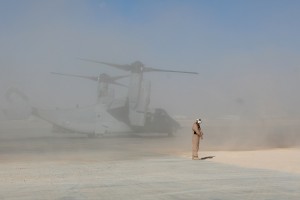
Lieutenant General Davis: This is an exciting time for Marine Aviation.
In some ways, that ‘gap” is pretty normal.
We see it all the time and have seen it as we introduced new platforms in the past: F-4 and A-7 to FA-18, AV-8A to AV-8B, then to the Radar variant of the Harrier.
We pay our operators to be masters of the machine they fight today – not the next one they will transition to.
We tend to love what we do (especially if we are good at it), and seeing the potential in a future platform is sometimes difficult – especially in the middle of a fight.
A very recent example of this is the initial skepticism about the MV-22 in the Marine Corps.
We had a number of officers from both the air and ground elements of the Corps–very thoughtful and respected Marines, who thought we didn’t need a V-22.
They claimed that it was ”too much technology for Marines… it couldn’t do this, couldn’t do that.”
All these officers have pretty much been proven to be dead wrong.
Also, when we initially fielded the Osprey it was viewed by many as a one-for-one replacement of each CH-46.
In other words, the mindset was “How good a CH-46 is the MV-22 going to be?”
The answer was that the MV-22 was not a CH-46, and for good reason: it was a sea change in Marine assault support aviation.
Indeed, getting the MV-22 into the Marine Corps has completely changed everything that we do in an exceptionally positive way.
The MV-22 is the single most in-demand platform we have in the Marine Corps right now.
The Osprey has transformed a Marine Expeditionary Unit (MEU) that was, I would say, a great fighting force, but fairly localized in the capability set that it could provide.
With a CH-46, we projected sea-based combat power out to a 25 to 30-mile radius.
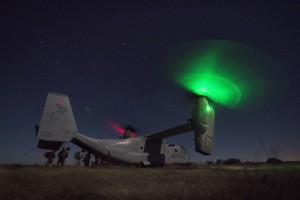
Today equipped with the MV-22, the MEU has a 500-mile assault support radius and delivers combat power at 280 knots.
This exponential improvement in capability fundamentally changes the way the MEU operates–and also how the MEU is viewed both by our combatant commanders and our adversaries.
My biggest challenge is building trained squadrons on a timeline that meets the seemingly insatiable demand for MV-22s.
The F-35B will mirror the MV-22’s assault support revolution across three key functions of Marine Aviation: anti-air warfare, offensive air support and electronic warfare.
A 5th Generation aircraft will enable our MAGTFs (MEUs, MEBs and MEFs) to fight any adversary, anywhere, from small deck amphibious carriers or expeditionary forward operating bases ashore.
Question: What will be the role of VMX-22 in rolling out the F-35?
Lieutenant General Davis: VMX-22 will play an important role in F-35 development.
The F-35 detachment is standing up out at Edwards Air Force Base with handpicked, top notch pilots and maintainers. VMX-22 is not only looking at new equipment, but also exploring and experimenting with new ways to fight and share information more effectively, continuously seeking new answers to the question:
“How do we best employ the F-35 to meet the current and emerging requirements of the MAGTF?”
As VMX-22 transitions to MCAS Yuma, Arizona, they’ll be integrated with Marine Aviation Weapons and Tactics Squadron One (MAWTS-1) and will advance how the F-35 operates in conjunction with not just other F-35s, but also our MV-22s, and everything else we fly or fight with – all the way down to the individual Marine rifleman.
We fail as a Corps if we can’t connect the kill and information chains from the F-35 to the Lance Corporal rifleman in the meeting engagement of the future battlefield.
We’ve had the F-35s from VMFA-121 participating in the Weapons and Tactics Instructor (WTI) course while simultaneously meeting pilot and maintenance training milestones required to achieve IOC.
VMX-22 got its first F-35 this past September and will have 4 aircraft by the end of 2015.
In 2018, they’ll move to Yuma with 6 aircraft, adding much needed mass to the equation which will allow us to integrate and experiment while conducting operational testing, alongside our weapons school.
With each WTI course, we bring all the elements of the Marine air-ground task force into play (not just the air combat element), providing an unmatched expeditionary laboratory.
This not only incorporates every type / model /series aircraft in Marine Aviation, but also our command-and-control assets, G/ATOR radars, and an infantry battalion – all to train and create experts (about 230 in a typical course) in employing Marine aviation as part of a MAGTF in various scenarios across the range of military operations (ROMO).
In this superb environment, we’ll be able to use VMX-22 to experiment and test during the WTI course to not only capture data and test points, but also to look at future capabilities and tactics to maximize our combat relevancy with the F-35. Bottom line:
I think we accelerate our opportunities for innovation and adaptation by having VMX-22 co-located with MAWTS-1 and VMFA-121.
Question: One misperception is that the Marines are buying a top end aircraft with limited ordnance capability, but this seems to ignore what the aircraft can do in all settings, not simply ones where stealth is a key requirement.
How do you view the F-35 in relationship with the strategic direction of the USMC overall?
Lieutenant General Davis The Marine Corps is the Nation’s expeditionary force in readiness—a force that is most ready when our nation is least ready–and we need to operate against any and all comers for initial operations.
The F-35 provides that essential capability bundle for the period ahead: low observable, high end and multi-mission–all in one package.
We intend to transition to an all F-35 fleet as rapidly as possible to ensure that we can bring a very high capability to the first day of any fight.
The Marine Corps requires—and the Nation demands—operational flexibility from the beginning of any contingency throughout the world.
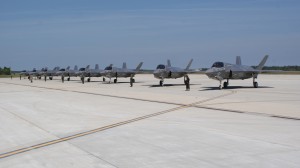
As the MAGTF creates the conditions to project power ashore or to shape the battlespace, we will use full fifth generation capability to knock down enemy defenses, strike key targets and enable the conduct of close air support to expeditionary forces ashore from the beginning of an operation.
The beauty of the F-35 is once the full capability needed in an anti-access area denial scenario is no longer required, we can very quickly transition the airplane appropriate to the mission.
If close air support (CAS) becomes the primary mission, and it’s a low threat environment like we have been dealing with in Iraq and Afghanistan we can load significant external ordnance and deliver precision all-weather fires. If electronic warfare is required, we can function as an EW truck or whatever we need that airplane to be.
Concurrently, this aircraft is always going to be an information and command enabler for any operation.
Question: The focus then is leveraging the aircraft to be able to perform a range of missions or mission support?
Lieutenant General Davis: We must be prepared to go aboard a ship, forward deploy with that ship and then flow those sea base-able assets ashore to operate in an expeditionary location against a powerful first rate adversary.
We will need to move – back and forth from our sea base to expeditionary bases ashore.
We will do this to maximize our combat power and ability to support Marine forces ashore – and support them in a fight against and foe in any threat condition.
Bottom line: we need to be able to defeat anybody, anywhere, anytime.
Regardless if the adversary is a state or non-state actor, the proliferation of high-end threats makes this aircraft relevant and necessary throughout the range of military operations. The Marine Corps must be ready for that kind of fight. We must protect our seabase, we must protect our Marines.
That’s what the Marine Corps is going to do with our aviation assets—not just F-35, but with everything we own.
We’re going to enable our Marines to be victorious in any battlespace, projecting national power from both seabases and expeditionary bases ashore.
Marine Aviation will enable the MAGTF to be that hard-hitting force that can do the job, and do it on a moment’s notice.
Editor’s Note: For earlier interviews with General Davis see the following:
And for our overview of reshaping of Pacific strategy leveraging the kind of innovation discussed in this article by Lt. General Davis, see the following:
https://sldinfo.com/rebuilding-american-military-power-in-the-pacific-a-21st-century-strategy/
In the slideshow above, the photos highlight VMX-22 receiving its first F-35Bs.
Credit:Marine Corps Air Station Miramar / 3rd Marine Aircraft Wing:10/9/14
- In the first photo, an F-35B Lightning II with Marine Operational and Test Evaluation Squadron (VMX) 22 prepares to touch down aboard Edwards Air Force Base, Calif., Oct. 9. This is the squadron’s first F-35 Lightning II.
- In the second photo, a F-35B Lightning II with Marine Operational and Test Evaluation Squadron (VMX) 22 taxis down the flight line aboard Edwards Air Force Base.
- In the third photo, a F-35B Lightning II with Marine Operational and Test Evaluation Squadron (VMX) 22 sit under a canopy after just landing aboard Edwards Air Force Base, Calif., Oct. 9.
- In the fourth photo, a F-35B Lightning II with Marine Operational and Test Evaluation Squadron (VMX) 22 sits under a canopy while Marines conduct post flight checks aboard Edwards Air Force Base, Calif., Oct. 9.
For a PDF of this article see the following:
Lieutenant General Davis on the USMC and the F35


